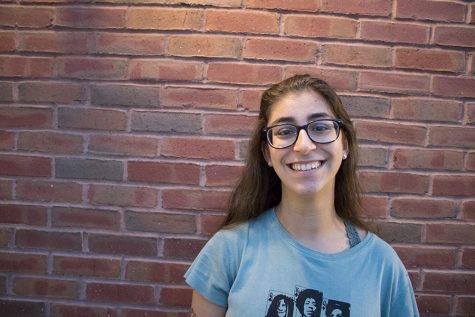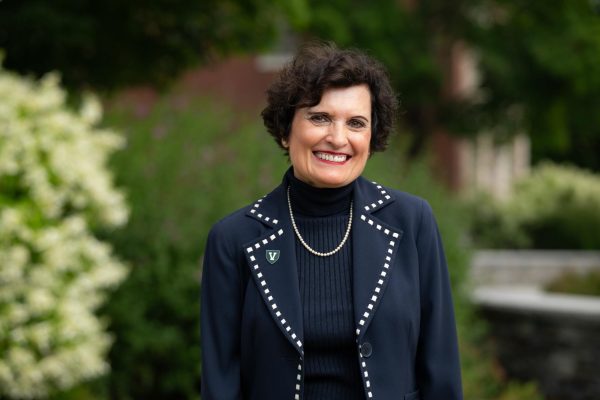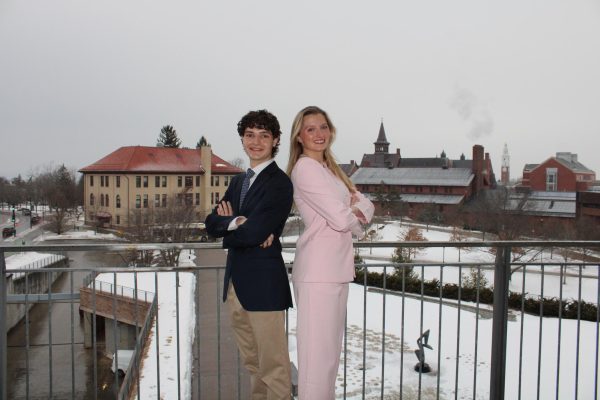Professor shares passion for robotics
Josh Bongard, associate professor of computer science, spent a lot of time in high school thinking about robots and their usefulness to humans, he said.
“Why did everyone think it would be so useful to have them, but no one could build them?” Bongard said.
Bongard said his decision to pursue science was inspired by the science fiction of Issac Asimov,a popular science-fiction writer.
“I got interested in robotics because no one could do it,” Bongard said. “If everyone knew they were so great, why couldn’t they just do it?”
The heart of robotics is to make a machine that can think for itself, he said.
“Robots will have to think for themselves for the very simple reason that they’re going to live in the world with us,” Bongard said.
Computers are programed to perform certain actions, but they are not able to understand the social implications of their actions, he said.
For instance, Google’s self-driving cars will need to understand why they cannot drive through a group of people to get to a certain location, Bongard said.
Bongard started working at UVM in 2006. Since then, he has received numerous awards for his research, including an invitation to meet former President Barack Obama in 2011.
The praise for Bongard’s research started with his work with in evolutionary robotics, according to Bongard’s website.
Essentially, the robots are created with an approach like evolution, Bongard said.
Bongard and his students sit in a lab and run a computer program where different robots are “evolved,” he said.
Like natural selection, the robots that do not perform as well as the others “die,” he said.
As a teacher, Bongard tries to make students think outside the box, said graduate student Sam Kriegman.
After receiving a degree in mathematics and statistics from UVM and working as a data scientist for an insurance company, Kriegman decided to move to robotics, he said.
“I never thought I could work in robotics, but Bongard helped me realize my potential,” Kriegman said.
Kriegman said he attended weekly meetings with Bongard, slowly developing an understanding of robotics.
Bongard’s work has attracted students from outside the U.S. as well.
Frank Veenstra, an international student from Netherlands, came to UVM as a visiting doctorate student in evolutionary robotics.
“I read a lot of Bongard’s papers, and I was kind of a fan of what he is doing,” Veenstra said.
Like Kriegman, Veenstra had a background outside of evolutionary robotics: a bachelor’s degree in biology and a master’s degree in bionics.
“There are a lot of similarities between the fields of biology and robotics, but they use different words,” Veenstra said.
Bongard uses biology as an inspiration for his work in robotics, Bongard said.
As a kid, Bongard said he loved to draw animals. He was fascinated by social insects and animals with strong abilities, like the cheetah and the gibbon, a type of primate, he said.
“I bore the students in my class with videos of gibbons,” Bongard said.
Bongard called for lawyers, teachers and philosophers to participate in the discussion of robotics and AI.
“I think right now is a great opportunity to bring together left brain thinkers and right brain thinkers from all aspects of society,” he said.
Creating safe robots that can think for themselves will require everyone in society, Bongard said.
“It’s not just going be the nerds who make robots,” he said. “It’s going to be society as a whole.”

Chloe Chaobal is the podcast editor of the Vermont Cynic. She joined the Cynic as a news writer in her first semester of UVM. She also created “Cat Chat”,...








